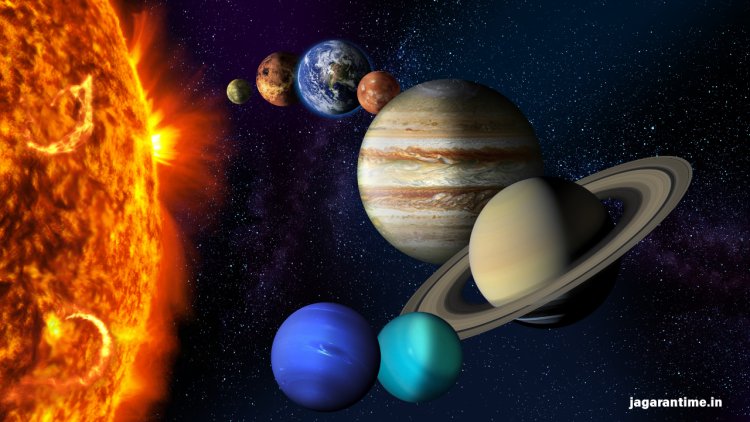Helium Abundance in the Sun: How This Element Powers and Shapes Our Star
Explore the significance of helium in the Sun's composition, how it's measured, and its crucial role in solar fusion and stellar evolution.

The Sun, our closest star and the ultimate source of energy for life on Earth, is a massive ball of plasma composed primarily of hydrogen and helium. While hydrogen is the most abundant element in the Sun, helium plays an equally vital role in determining its structure, energy production, and long-term evolution.
In this blog, we explore the helium abundance in the Sun, how it was discovered, why it matters, and what it tells us about stellar physics and the broader universe.
What is Helium?
Helium is the second lightest and second most abundant element in the universe. It was first discovered in the Sun’s spectrum before it was found on Earth – a rarity in science!
- Atomic number: 2
- Symbol: He
- Nature: Inert, noble gas
- Formation in stars: Primarily through nuclear fusion (hydrogen nuclei combining to form helium)
Helium is crucial to understanding nuclear fusion processes that power stars like our Sun.
Historical Discovery of Helium in the Sun
The term "helium" comes from the Greek word Helios, meaning "Sun." In 1868, French astronomer Pierre Janssen and English scientist Norman Lockyer independently observed a yellow spectral line in sunlight that didn’t match any known element on Earth. This new element, later named helium, was identified via spectroscopy, not chemical analysis.
It was only in 1895 that helium was discovered on Earth by Sir William Ramsay.
Composition of the Sun: A Breakdown
The Sun's composition is mostly hydrogen (~74%) and helium (~24%) by mass, with the remaining 2% consisting of heavier elements like carbon, oxygen, and iron.
|
Element |
Percentage by Mass |
Percentage by Number of Atoms |
|
Hydrogen (H) |
~74% |
~92% |
|
Helium (He) |
~24% |
~7% |
|
Others (C, O, Fe, etc.) |
~2% |
~1% |
So while helium makes up a smaller number of atoms, its mass contribution is significant due to its heavier atomic structure compared to hydrogen.
How Do Scientists Measure Helium Abundance?
Measuring the helium abundance in the Sun isn’t straightforward, especially because helium does not emit strong lines in the Sun's visible spectrum (photosphere). However, scientists use a variety of methods:
1. Helioseismology
This technique studies oscillations and sound waves within the Sun. Variations in pressure and density provide indirect clues about helium concentration in the solar interior, especially in the convection zone.
2. Solar Spectroscopy
Helium lines are more prominent in the chromosphere and corona, where the Sun’s atmosphere is hotter. Observations during solar eclipses or using UV-sensitive telescopes help detect helium emissions.
3. Solar Wind and Solar Probes
Spacecraft like Ulysses, Parker Solar Probe, and SOHO collect data from the solar wind to estimate helium abundance in the Sun’s outer layers.
4. Solar Neutrino Detection
Fusion reactions that produce helium also emit neutrinos. By detecting and analyzing these neutrinos on Earth, scientists infer fusion rates and thus helium production.
The Role of Helium in Solar Fusion
The Sun generates energy by fusing hydrogen into helium through the proton-proton (p-p) chain reaction:
1. Step 1: Two hydrogen nuclei (protons) fuse to form deuterium.
2. Step 2: Deuterium fuses with another proton to form helium-3.
3. Step 3: Two helium-3 nuclei combine to form helium-4, releasing two protons and a huge amount of energy.
Each helium-4 nucleus produced results in the release of ~26.7 MeV (million electron volts) of energy.
This energy powers the Sun and radiates outward as light and heat.
Helium and Stellar Evolution
Helium isn't just a product of fusion—it also dictates the future evolution of the Sun. Over billions of years:
- Core hydrogen will deplete
- Helium builds up in the core
- The Sun will expand into a red giant
- Helium will undergo further fusion into carbon and oxygen
- Ultimately, the Sun will shed its outer layers and become a white dwarf
Thus, helium abundance isn’t just a number; it’s a timeline of the Sun’s life cycle.
Standard Solar Models and Helium
To understand the Sun's inner workings, scientists build Standard Solar Models (SSM), which are simulations based on physics and observed data. Helium abundance is a critical input in these models.
Key parameters affected by helium levels:
- Core temperature and pressure
- Fusion rate
- Neutrino output
- Sun’s luminosity and age estimation
Discrepancies in helium estimates lead to the famous "solar abundance problem," where observed values conflict with predictions. Solving it requires refining both models and measurements.
Importance of Helium Abundance in Astrophysics
Studying helium in the Sun provides insights into:
1. Big Bang Nucleosynthesis (BBN): The amount of primordial helium formed after the Big Bang.
2. Star formation: Helium levels affect star birth and death rates in galaxies.
3. Cosmic chemical evolution: Tracking how helium evolves tells us about the history of matter.
4. Calibration of solar models: Essential for understanding other stars as well.
Future Missions and Research
NASA and ESA are continuing to invest in missions that study the Sun’s composition:
- Parker Solar Probe: Sampling solar wind and magnetic fields
- Solar Orbiter: High-resolution mapping of the Sun’s poles and equatorial regions
- DKIST (Daniel K. Inouye Solar Telescope): Ground-based observatory for solar spectra
These tools will improve the precision of helium abundance measurements and advance our understanding of stellar physics.
Fun Facts About Helium in the Sun
- The Sun produces ~600 million tons of helium every second through fusion.
- Helium was the first element discovered in space before Earth.
- Helium plays a role in sunspot formation and solar flares, as it's part of the Sun’s plasma dynamics.
The helium abundance in the Sun is more than just a figure in a chart—it’s a window into the universe’s past, present, and future. From powering solar fusion to guiding the destiny of our star, helium is an essential player in the cosmic story.
As our observational tools improve, and as we continue to explore the Sun up close, our understanding of this humble yet mighty element deepens—revealing not just the secrets of our Sun, but of all the stars that shine across the cosmos.
What's Your Reaction?




















